#rememberthis
Before the war: Liliana Kliger (born Sara Lea) was born in Łódź, Poland, in September 1928. She grew up in a religious Jewish family.
During the Holocaust: In 1940, her family was forced into the Łódź ghetto, where her mother died. At 13, Liliana was forced to work in factories. In August 1944, the remaining family was deported to Auschwitz. Upon arrival, Liliane’s father, sister Rachel, and Rachel’s two-year-old daughter were sent to the gas chambers. Liliana and her sister, Malka were registered and in the camp for six weeks before being transferred to Halbstadt, a labor camp in Czechoslovakia. They were liberated by the Red Army on May 9, 1945.
After the Holocaust: After the war, Liliana returned to Łódź. She continued her education, earning a degree in biology in Warsaw. She married in 1956 and eventually emigrated to Israel.
#rememberthis
Before the war: Livia Fränkel, née Szmuk was born in December 1928 in Sighet, Transylvania. She was her parent’s second daughter; she had an older sister, Hédi.
During the Holocaust: Following the Nazi occupation, Livia and her family were moved to the ghetto in their hometown. In May 1944, they were deported to Auschwitz. She and her sister were selected for work, but their parents were immediately sent to the gas chambers. The sisters were transferred to Dessauer Ufer, a subcamp of Neuengamme in Veddel, Germany, and from there to the subcamps in Wedel and Eidelstedt. Livia and her sister were liberated from Bergen-Belsen on April 15, 1945.
After the Holocaust: After the war, the sisters moved to Sweden to recover. Livia married her husband there in 1947 and had three children, six grandchildren and five great-grandchildren.
#rememberthis
Before the war: Magda Bader was born in Munkács, Czechoslovakia (present-day Ukraine), in April 1930. She was the youngest of 10 siblings: 6 girls and 4 brothers. She attended Hebrew elementary school but had to change to a Jewish girl’s middle school once the Hungarians occupied.
During the Holocaust: In the spring of 1944, at 14, she and some of her family, her brothers, were already taken for forced labor and were relocated to a ghetto. After the ghetto was liquidated, they were sent to Auschwitz. Magda and her three sisters were separated from their parents and another sister. She never saw them again. Magda was in Birkenau for a few months before she and her sisters were moved to a small satellite camp in Bergen-Belsen. One night, with the approaching British army, the guards left the camp unattended, so the four sisters escaped to the woods together. They were met by American soldiers two days before her 15th birthday on April 15, 1945.
After the Holocaust: After living in England for almost three years, Magda received a scholarship to Denver University, which allowed her to emigrate to the United States. There, she received her master’s and taught art in public schools for many years.
#rememberthis
Before the war: Magda Goldman was born in January 1931, in Kostrina, Czechoslovakia.
During the Holocaust: She and her family were moved to the Uzhorod ghetto. Magda was 13 when she was deported to Auschwitz in June 1944, where her parents were murdered. Her older sister, Frida, helped her survive several selections. Later, Magda was deported to Ravensbrück, then to slave labor in Germany, first in Barth and then Rostock-Schwarzenforst. She was liberated by Russian forces from Hinrichshagen, Germany.
After the Holocaust: After liberation, she and her sister returned to their hometown to find surviving family members. Twenty-five years later, she emigrated to America and has two children and two grandchildren.
#rememberthis
Before the war: Marcel Zielinski was born Elimelech Grüner in September 1934, in Kraków, Poland.
During the Holocaust: In 1941, the Nazis forced Marcel and his parents into the Kraków ghetto. After the liquidation of the ghetto in 1943, he and his family were sent to the Płaszów concentration camp in the southern suburb of Kraków. With the liquidation of the camp the following year, Marcel and his father were deported to the Gross-Rosen camp in Germany. A month later, they were sent to Auschwitz. Marcel’s mother stayed in Płaszów but was eventually also sent to Auschwitz. A week before liberation, his parents were forced on a death march; his father did not survive. Marcel was liberated from Auschwitz in January 1945 and walked back to Kraków, where he hoped to find his parents. The JCC orphanage took him in, where his mother eventually found him.
After the Holocaust: Marcel moved to Israel with his wife, Maryla, in 1958 before moving to Canada in 1967. There, he worked as an engineer for aerospace companies. Marcel returned to Poland for several years to participate in the JCC’s Ride for the Living, a 95km charity bike ride from Auschwitz to the JCC in Kraków.
#rememberthis
Before the war: Maria Haas was born in June 1925, in Košice, Hungary. Before the war, she had been attending nursing school.
During the Holocaust: Maria was imprisoned in Budapest and then deported to Auschwitz in 1944 at 19 years old. Selected for labor, she was forced to dig trenches for the German army. Then, Maria was deported to the Stutthof concentration camp. She was liberated from Koronowo in January 1945.
After the Holocaust: She currently lives in Mcminnville, OR with her son.
#rememberthis
Before the war: Meir Usherovitz was born in Pabianice, Poland in December 1928.
During the Holocaust: Shortly before his bar mitzvah in 1941, he and his family were sent to a ghetto in his hometown and then later, in 1942, to the Łódź ghetto. After the liquidation of the ghetto in 1944, he was deported to Auschwitz, where his father, mother and younger brother did not survive the selection. Meir was sent to clean the horses’ stables. From Auschwitz, he was sent to Mauthausen and then to Ebensee. Only Meir and two cousins survived the war. His older brother Naftali was killed in a collapse of a wall in the Warsaw ghetto, where he was part of a contingent of slave laborers sent to clean up the ghetto after the uprising.
After the Holocaust: Meir moved to Israel and settled in Gush Etzion, though he eventually moved to the United States in 1957. He eventually had his bar mitzvah 80 years after he intended to.
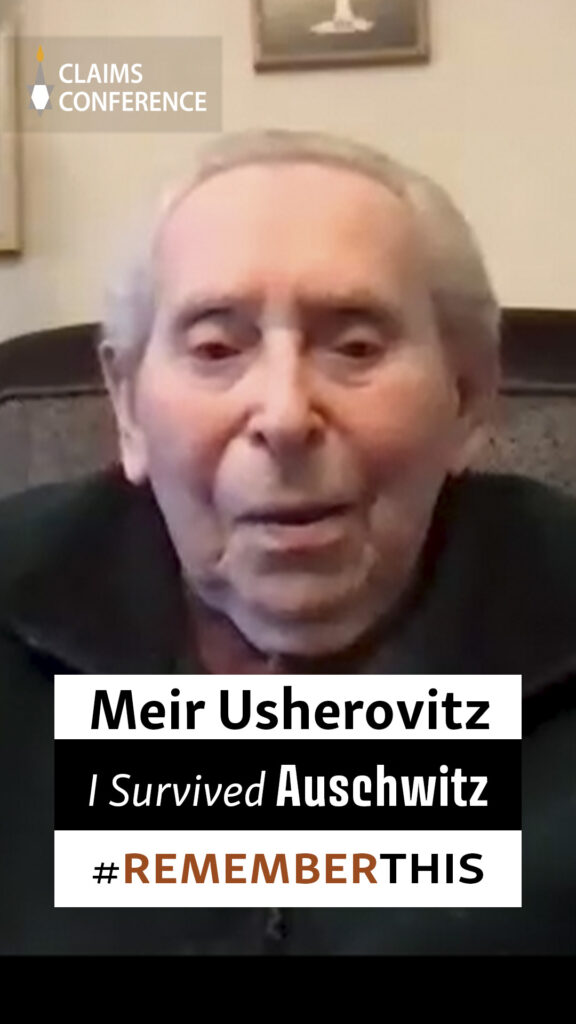
#rememberthis
Before the war: Menecham was born in 1927 in Orolová, Czechoslovakia, one of 8 children. The family then moved to Munkács. In the spring of 1940, his father was drafted into the labor service of the Hungarian army and sent to the Eastern Front.
During the Holocaust: In the spring of 1944, 21 members of his family were forced into the Munkács ghetto. In May 1944, Menachem and his family were deported to Auschwitz. His mother and six of his siblings were immediately murdered in the gas chambers. His older sister was selected for labor but died from illness. In January 1945, Menachem was taken on a death march and then on a train to Buchenwald. When Buchenwald was evacuated in early April 1945, he hid. Eventually, he was captured and taken on a death march but escaped and returned to the camp. The next day, the camp was liberated by the American army.
After the Holocaust: After liberation, Menachem was transferred to Switzerland to recover. After learning that his father had survived, the two decided to move to Israel, where he now lives. He married a fellow survivor, Rivka, and has three children and five grandchildren.
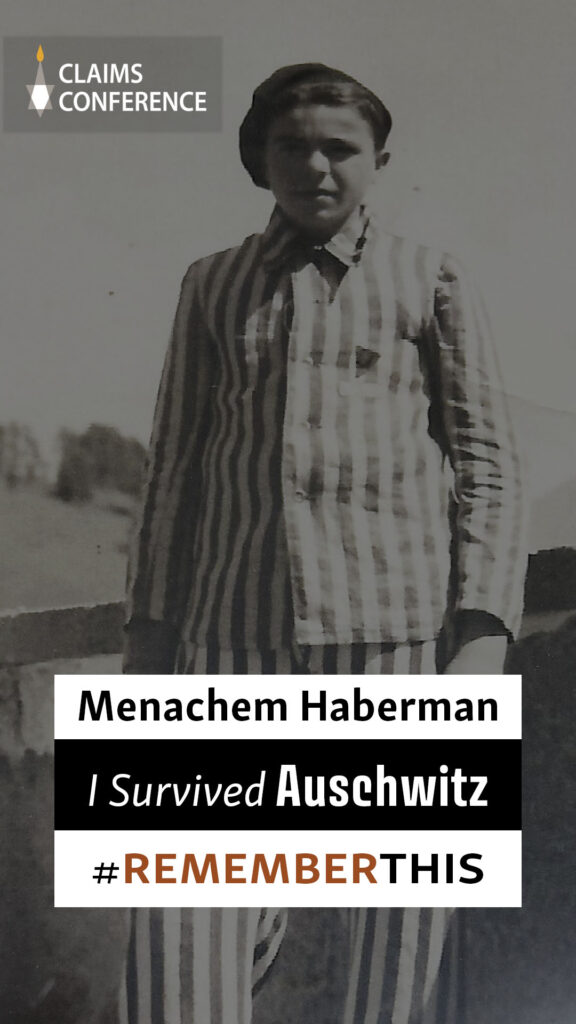
#rememberthis
During the Holocaust: Miriam Fuchs arrived at Auschwitz with sister and mother when she was less than 15 years old. After selection, she was taken to labor. She was then deported to the Stutthof concentration camp. There, her sister saved her life from execution, and she was then sent to the Kaiserwald concentration camp near Riga, Latvia. She spent a few months there, until the camp was liberated by the Russian Army on October 13, 1944.
After the Holocaust: Miriam now resides in Jerusalem, Israel.
#rememberthis
Before the war: Mordechai Gidron was born in 1931 in Budapest, Hungary. In 1942, the family moved to Miskolc due to rising antisemitism. On March 19, 1944, a day after his Bar Mitzvah, the Nazis invaded Hungary.
During the Holocaust: Mordechai and his family were forced into the Miskolc ghetto. Then, they were deported to Auschwitz. His mother and grandmother were immediately sent to the gas chamber. While he was only 13 years old, his father told the SS that he was 16. After this, he and his father were sent to the Allach labor camp. They were then separated when Gidron was sent to Mühldorf.
After the Holocaust: Following the war, Mordechai and his father were released, and they moved to Israel, where he currently lives.
#rememberthis
Before the war: Moshe Blech was born in 1928 in Grzebcek, Czechoslovakia.
During the Holocaust: Moshe Blech arrived at Auschwitz with his father and younger brother. Later, they were deported to Warsaw, where they worked in the city’s ruins for about six months.
After the Holocaust: Moshe stayed in Italy after the war while trying to emigrate to Israel. He moved there in 1948 and met his wife; they have a son and a daughter.
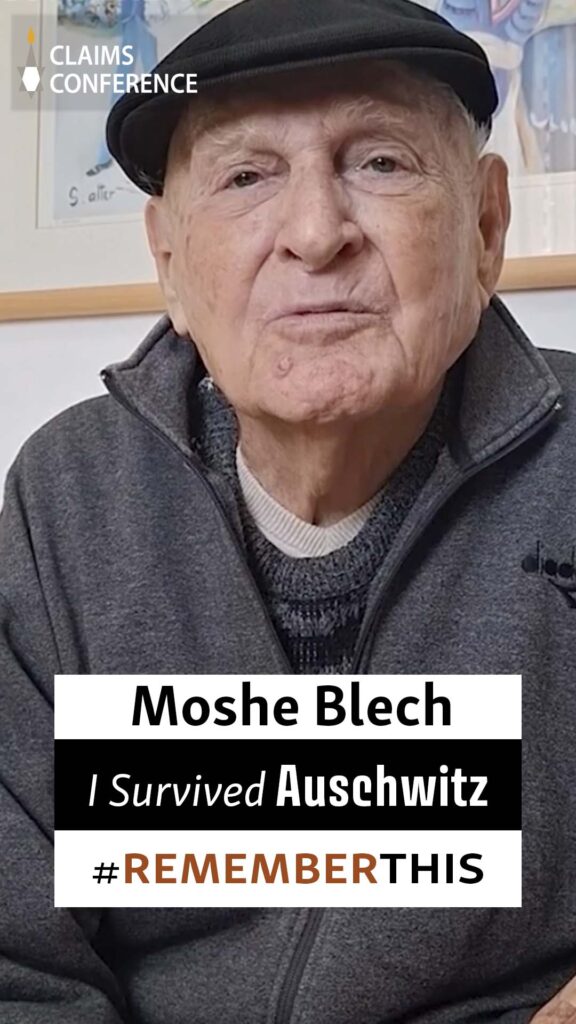
#rememberthis
Before the war: Naftali (Juraj) Fürst was born in December 1932, in Bratislava, Czechoslovakia (now Slovakia). He had one older brother, Shmuel.
During the Holocaust: Naftali and his family went into hiding with the dissolution of Czechoslovakia and Slovak cooperation with the Nazis but were discovered and interned in 1942 in the Sered concentration camp. His family escaped to a nearby town and then to Piesta’ny but were caught and sent back to the camp after the Nazis entered Slovakia. In November 1944, they were deported to Auschwitz. The family was separated, with Naftali and his brother being sent to a subcamp, Budy, and then on a death march to Buchenwald. Naftali was liberated from the camp three months later, in April 1945, but his brother was sent to Theresienstadt and not liberated until May.
After the Holocaust: Naftali returned to Slovakia in the summer, reuniting with his brother and parents. They all emigrated to Israel in 1949. He has four grandchildren. He is Chairman of the Advisory Board of Former Inmates of Buchenwald Concentration Camp.
#rememberthis
Before the war: Octavian Fülöp was born in October 1930, in Miercurea Nirajului, Romania, to a family of Jewish merchants.
During the Holocaust: In April 1944, Octavian, 13 years old, and his family were sent to the Târgu-Mures ghetto in Romania. He was then transported to four different camps: Auschwitz, Melk Concentration Camp, Mauthausen and Gunskirchen. Arriving at Auschwitz in May 1944, Octavian was there for 8 months and evaded the gas chamber by creating a distraction in the extermination room. From Auschwitz, he was sent on a death march to Mauthausen, then Melk. The American army liberated him on May 4, 1945, from the Gunskirchen camp in Austria.
After the Holocaust: After the Holocaust Octavian returned to Romania to find only two living relatives, his aunt and uncle. Eventually, he would become a history teacher.
#rememberthis
Before the war: Olga Goldstein born in Tirgu-Mores, Romania in October 1929.
During the Holocaust: Olga and her family were moved to the ghetto. At 14 years old, she was deported to Auschwitz. Her mother was with her until she fell sick and was taken to the gas chambers. Olga was later transported to Bergen-Belsen and another camp in Leipzig. She was sent on a death march to Theresienstadt and liberated on May 9, 1945.
After the Holocaust: She reunited with her brother and father in October 1945. She later emigrated from Romania to Cleveland. She has not been back to Auschwitz.
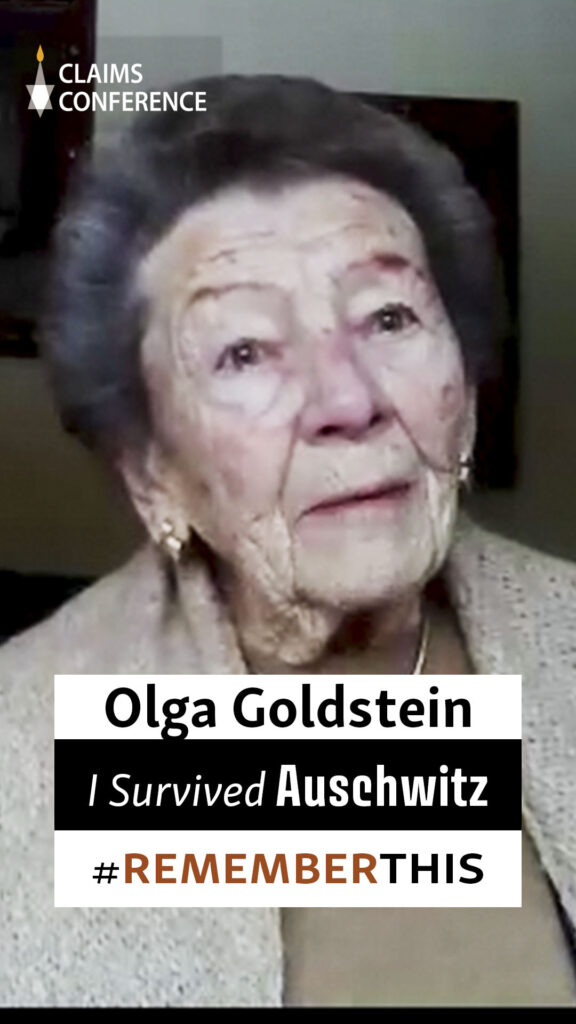
Add caption
#rememberthis
Before the war: Oscar Herzlinger was born in Dumbraveni, Romania in 1926. His parents were divorced, so he grew up with his aunts and uncles.
During the Holocaust: Oscar’s mother remarried, and she and her daughter, his half-sister, were deported from Baia Mare in 1944 and murdered in Auschwitz. In May 1944, at 18 years old, Oscar was forced into the Szamosujvar ghetto and then the Kolozsvár ghetto. Shortly after, he was deported to Auschwitz with his aunt and uncle. He was then sent to Kaufering, a subcamp of Dachau, then Landsberg. He was then forced on a death march and liberated by American forces in Munich.
After the Holocaust: After the war, Oscar returned to Romania after the war to find family; only his two uncles and a cousin returned. He married Sofia in 1949 and has two children, four grandchildren and six great-grandchildren. He made Aliyah to Israel in 1990, where he lives today.
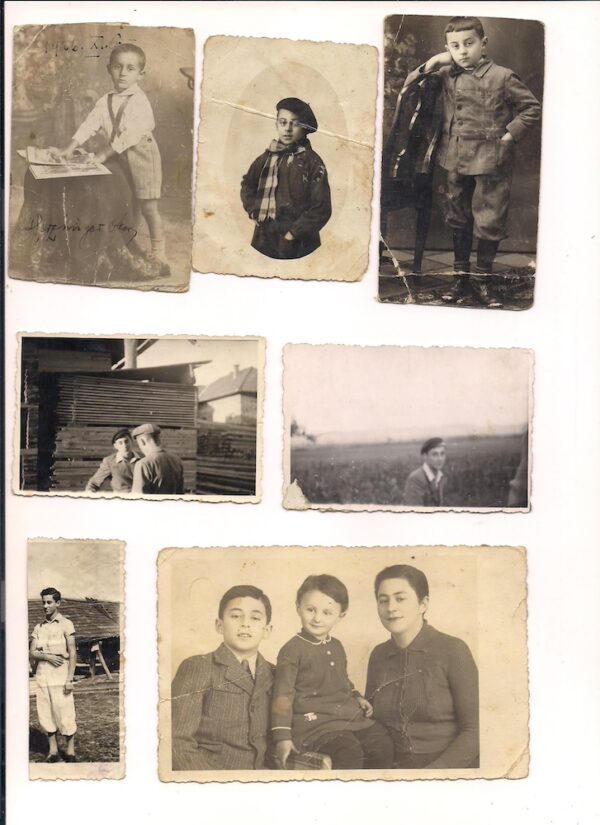
#rememberthis
Before the War: Oscar Singer was born in Radomyśl Wielki, Poland, in 1925. He had three brothers and one little sister. His parents were the kosher butchers in the village.
During the Holocaust: Oscar was 14 when his village in Southeastern Poland was invaded by Nazi Germany in 1939. One of his brothers, Jacob, who was a Polish soldier, was killed during the invasion. With the promise of saving his family, he and his brothers submitted to slave labor at the hands of the Nazis. He was then forced to work at the Mielic Airplane Factory in Southeastern Poland between 1941 and 1943. At this labor camp, he was tattooed with the letters “KL,” which identified him as a Jewish laborer. Oscar and his remaining brother, Abraham, were moved to the Wieliczka Salt Mine for six weeks in 1943. From there, they were transported to Auschwitz. Here, Oscar was separated from his brother, who was sent to the Kraków-Płaszów Concentration Camp after selection. Oscar was selected to work in detail at Hujowa Górka, an execution site near the Płaszów camp. After working in the Płaszów camp until Mid-1944, he was moved to the Dresden Tank Factory, where he reunited with his brother. In early 1945, Oscar and his brother were sent on a death march to the Theresienstadt ghetto; Abraham died on the march. Russians liberated him in May 1945.
After the Holocaust: After receiving his visa to come to the United States in 1951, he settled in Denver, Colorado. He married, had three children, and had a successful career in the restaurant and catering business. A few years ago, he relocated to Pittsburgh to live with his daughter, Lee.
↑top
All content ⒸConference on Jewish Material Claims Against Germany (Claims Conference)